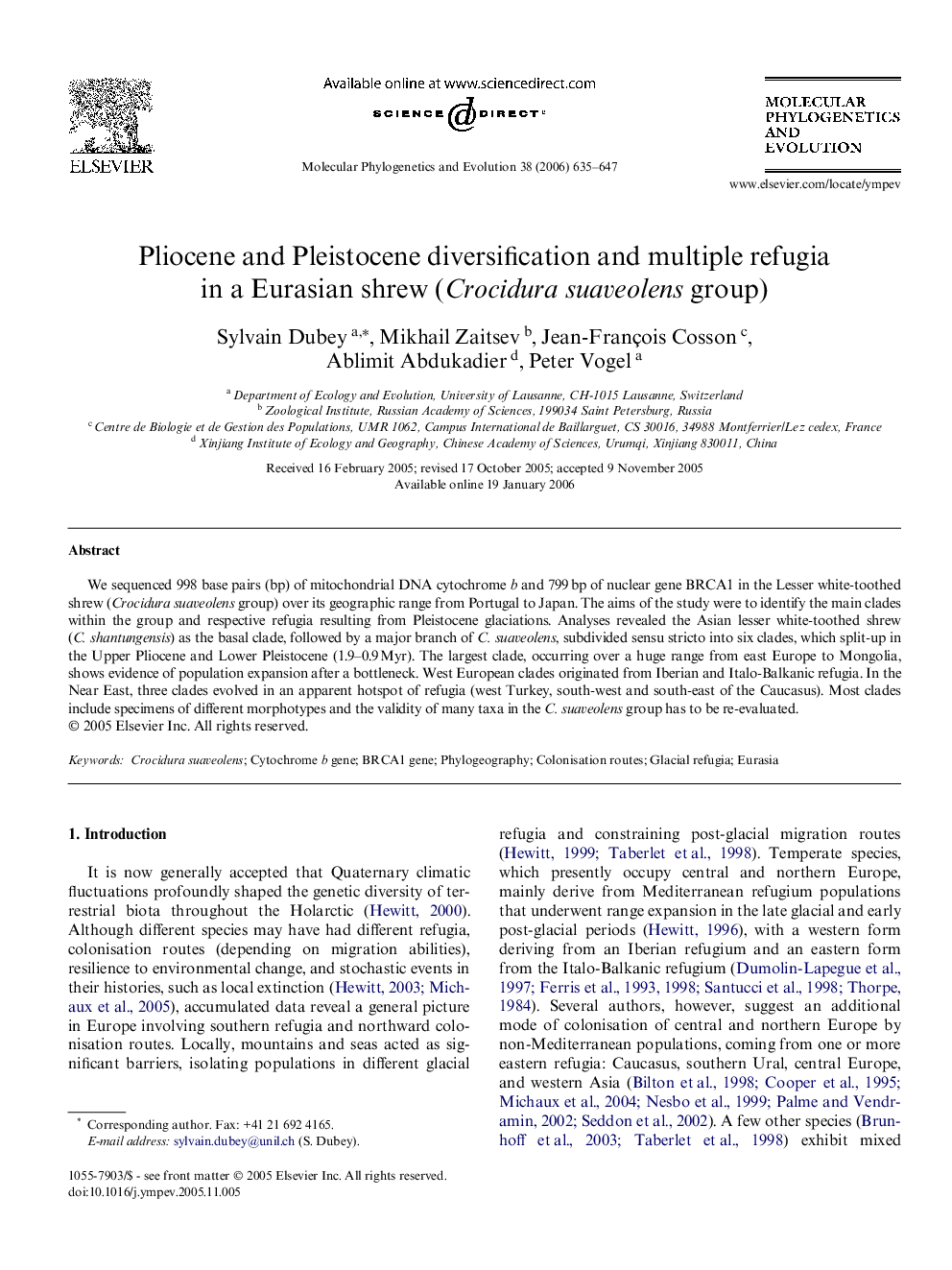| Article ID | Journal | Published Year | Pages | File Type |
|---|---|---|---|---|
| 2836086 | Molecular Phylogenetics and Evolution | 2006 | 13 Pages |
We sequenced 998 base pairs (bp) of mitochondrial DNA cytochrome b and 799 bp of nuclear gene BRCA1 in the Lesser white-toothed shrew (Crocidura suaveolens group) over its geographic range from Portugal to Japan. The aims of the study were to identify the main clades within the group and respective refugia resulting from Pleistocene glaciations. Analyses revealed the Asian lesser white-toothed shrew (C. shantungensis) as the basal clade, followed by a major branch of C. suaveolens, subdivided sensu stricto into six clades, which split-up in the Upper Pliocene and Lower Pleistocene (1.9–0.9 Myr). The largest clade, occurring over a huge range from east Europe to Mongolia, shows evidence of population expansion after a bottleneck. West European clades originated from Iberian and Italo-Balkanic refugia. In the Near East, three clades evolved in an apparent hotspot of refugia (west Turkey, south-west and south-east of the Caucasus). Most clades include specimens of different morphotypes and the validity of many taxa in the C. suaveolens group has to be re-evaluated.
